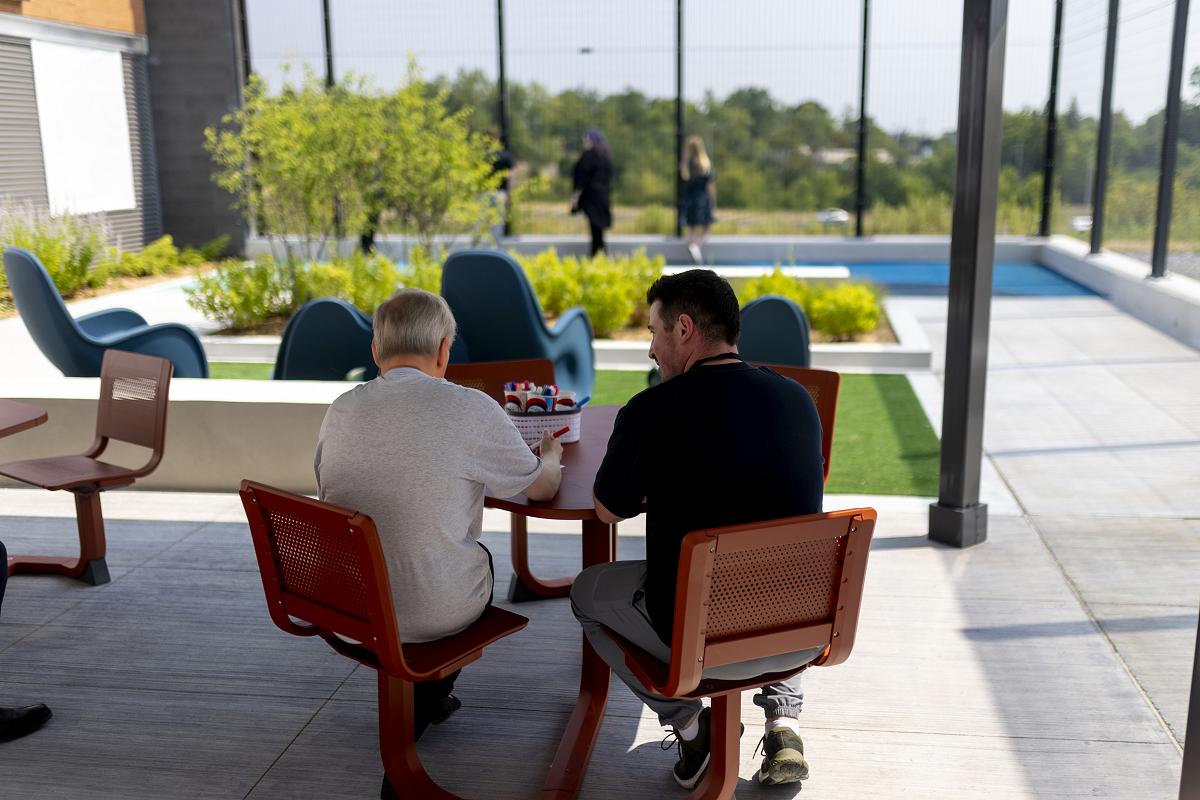
This study highlights the importance of adapting organizational culture frameworks to the specific characteristics of healthcare professional education. İpek’s Organizational Culture Scale, initially designed for general educational contexts, proved highly applicable after validated to reflect the distinct dynamics of healthcare professional education. Factor analysis resulted in a robust five-factor structure with 30 items [provided Turkish (Supplementary Table 2) and English (Supplementary Table 3) translation version as a Supplementary Material], consistent with theoretical expectations and the existing literature. By focusing on the Turkish cultural context and the specific needs of health education, this study offers a novel and comprehensive tool for enhancing the strategic planning and quality improvement efforts in healthcare professional education, a domain previously unexplored with this scale [42].
The factor structure of this adapted scale was supported by strong psychometric properties. The Kaiser–Meyer–Olkin (KMO) value indicated excellent sampling adequacy, confirming that the data were well-suited for factor analysis [43]. Falling within the “well factorizable” range of 0.80–0.90, the KMO result demonstrated that the scale’s items clustered meaningfully into coherent subscales, as recommended in the literature [18]. In addition, the variance ratios and eigenvalues obtained were consistent with established benchmarks for construct validation, reinforcing the structural soundness and theoretical integrity of the adapted OCS [19, 21, 42].
The terminology of the subscales in this adapted scale aligns with prevailing literature [3, 44, 45]. This alignment reinforces the conceptual relevance and practical applicability of the subscales identified: Structural Order and Formality, Belonging and Collective Responsibility, Achievement and Performance Orientation, Authority and Hierarchy, and Competition Orientation. These subscales were derived based on the unique organizational and cultural characteristics of healthcare professional education, which involves not only the acquisition of individual knowledge and skills, but also emphasizes teamwork, interprofessional collaboration, role modeling, and mentor–apprentice dynamics. Given that healthcare professionals are perceived as strong, trustworthy, and exemplary figures in society, the organizational culture shaped during their education plays a critical role in forming their professional identity, ethical values, and collaborative behavior. Moreover, as healthcare institutions inherently require a high level of cooperation and interdisciplinary interaction, the presence of a supportive and participatory culture within educational settings can further strengthen interprofessional relationships. To further elucidate the structure of the adapted scale, each subscale is explained below with reference to its theoretical basis and representative items.
Structural order and formality
This factor reflects the organization’s structured, planned, and rule-based nature, emphasizing formalities and regulations. Sample items include managers encouraging and rewarding loyalty, meticulously planned and scheduled educational activities, emphasis on completing tasks on time and according to rules, and a collaborative approach to planning educational activities. Literature support indicates that in a bureaucratic culture, rules, procedures, and hierarchy are essential [3, 46,47,48].
Belonging and collective responsibility
This factor captures members’ commitment to the organization and their sense of collective responsibility. Sample items include the ease of taking risks for success, a strong sense of responsibility for the faculty’s success, pride in the faculty, protection and defense of the faculty against outsiders, and a strong sense of belonging. Clan culture emphasizes belonging, cooperation, and collective responsibility. In healthcare professional education, fostering a strong sense of belonging among students and staff is essential for developing future professionals who value collaboration and interprofessional cooperation—skills, vital for multidisciplinary healthcare teams [45, 48].
Achievement and performance orientation
This factor highlights the focus on achievement and performance, with reward systems based on success. Sample items include rewarding job performance, prioritizing results over formalities, supporting and encouraging success, rewarding based on success, and discussing mistakes without focusing on who made them. Achievement culture rewards individual achievement and performance. An achievement-focused culture motivates learners to pursue continuous improvement and adapt to the rapidly evolving demands of healthcare delivery, directly impacting future patient outcomes and professional standards [3, 15, 41, 45, 49].
Authority and hierarchy
This factor reflects the structured decision-making mechanisms, defined roles, and formalized power relationships that are intrinsic to both healthcare systems and educational institutions that prepare healthcare professionals. In the context of healthcare education, hierarchical structures often mirror clinical environments where authority gradients are prominent—such as between attending physicians, residents, nurses, and students. While such structures are necessary for ensuring accountability, clarity of responsibilities, and patient safety in clinical settings, they may also influence educational dynamics. For example, strong hierarchical cultures can sometimes hinder open communication, discourage student participation, or suppress critical questioning—all of which are essential for active learning and professional development. Conversely, when authority is exercised transparently and combined with supportive mentorship, it can reinforce professional identity, foster respect for institutional norms, and prepare students for the realities of hierarchical healthcare systems. Therefore, understanding how authority and hierarchy are perceived and enacted within educational institutions is crucial for balancing discipline with empowerment, and tradition with innovation, in the education of future healthcare professionals [3, 46, 48, 50].
Competition and success orientation
This factor captures the degree to which individuals and institutions emphasize achievement, performance, and comparison-based motivation within organizational culture. In healthcare professional education, this orientation manifests in various ways—through academic rankings, competitive examination systems, performance-based evaluations, and prestige-driven program structures. While a moderate level of competition can drive motivation, excellence, and accountability among students, excessive emphasis on outperforming peers may hinder collaborative learning, foster stress, and undermine team-based competencies that are essential in healthcare environments. Therefore, striking a balance between fostering personal achievement and promoting shared responsibility is essential in shaping a healthy educational culture. Recognizing and assessing this cultural dimension can guide institutions in aligning successful metrics with professional values, ensuring that students not only strive for excellence, but also internalize the cooperative spirit necessary for effective healthcare delivery [45, 47, 50].
During the adaptation process, certain items emphasizing excessive competitiveness or rigid bureaucratic control were excluded to better align the scale with contemporary academic realities. The refinement of the scale reflects a conscious adjustment to the nuanced environment of healthcare professional education, where collaboration, academic freedom, and flexible achievement pathways are increasingly prioritized. This careful modification ensures that the adapted scale captures dimensions of organizational culture that are both meaningful and relevant to healthcare professional education. This validated instrument offers a multidimensional framework that reflects critical aspects of educational culture, including authority and hierarchy, structural formality, belonging, performance orientation, and competition. Its application extends beyond mere cultural assessment—providing valuable insights for various institutional stakeholders. For students, the scale can help reveal how organizational culture shapes their learning experiences, sense of professional identity, and engagement within interprofessional and hierarchical environments. For faculty members, it offers a lens through which to evaluate their role as institutional role models, contributors to cultural climate, and facilitators of collaborative learning. For administrators and institutional leaders, the instrument serves as a tool to assess cultural alignment with strategic goals, inform curriculum reform, and guide organizational development.
The structural validity of the adapted OCS was further confirmed through confirmatory factor analysis (CFA), employing structural equation modeling techniques. The CFA demonstrated that the model achieved satisfactory fit indices, with values for RMSEA, SRMR, IFI, CFI, GFI, TLI, and NFI all falling within acceptable thresholds [26, 27]. Although the confirmatory factor analysis (CFA) results generally indicated an acceptable model fit, it is important to acknowledge that the RMSEA value slightly exceeded the commonly accepted threshold of 0.08, and the GFI value fell marginally below the optimal criterion of 0.90 [51]. This slight deviation may be attributed to the limitations of sample size distribution across faculties; a more proportionally stratified sampling approach—ensuring at least 5–10 participants per item from each faculty—might have yielded more optimal fit indices. Nonetheless, the overall model fit remains robust, and the results are considered sufficiently strong to support the scale’s structural validity. Future studies with larger and more diverse samples can further validate and refine the model. These deviations suggest that while the model is acceptable, there is potential for improvement. Future model refinements could include re-examining modification indices to identify and address localized areas of misfit, such as correlating residuals between theoretically related items or exploring item parceling strategies to reduce model complexity [30]. Additionally, further cross-validation of the model with independent samples from different healthcare professional education could help verify the scale’s structure and enhance its generalizability. Structural modifications, such as allowing for covariance between closely related subscales or reevaluating items with lower factor loadings, may also yield improved fit indices while maintaining theoretical integrity complexity [30].
The adapted OCS demonstrated a strong degree of internal consistency, reflecting its reliability as a measurement tool for organizational culture in healthcare professional education. Compared to the original version of İpek’s scale, which had acceptable reliability the adapted version exhibited an enhanced level of cohesion across both the overall scale and its subscales. This outcome confirms that the adapted items consistently measure the underlying cultural constructs they intend to capture, offering researchers and practitioners a dependable instrument for organizational assessment. The improved reliability strengthens the scale’s ability to support empirical studies and institutional evaluations aimed at enhancing undergraduate-level education.
Overall, the findings align with established literature emphasizing that scales reaching or exceeding the reliability threshold of 0.70 are considered methodologically sound [32]. The successful adaptation and validation process reinforce the robustness of the OCS in capturing the multifaceted nature of organizational culture in healthcare professional education.
OCS offers practical applications for a range of stakeholders within healthcare professional education institutions. Policymakers can use the scale to systematically assess the existing cultural environment and identify areas where targeted reforms are necessary to foster a more collaborative, achievement-oriented, or student-centered institutional culture. Faculty developers can apply OCS results to design professional development programs that align faculty behaviors and attitudes with the institution’s desired cultural attributes, such as promoting innovation, teamwork, or accountability. Administrators can utilize the scale findings to inform strategic decisions in curriculum planning, ensuring that teaching methods, assessment strategies, and interprofessional education initiatives are culturally congruent and supportive of the institution’s broader mission. Moreover, longitudinal use of the scale can help administrators monitor cultural shifts over time following major institutional changes such as curriculum reforms, mergers, or accreditation processes.
While the study provides valuable insights into organizational culture within healthcare professional education, several limitations must be acknowledged. Cross-sectional design limits the ability to assess causal relationships or track changes in organizational culture over time; future research should incorporate longitudinal designs to monitor cultural evolution across academic years. Moreover, voluntary participation may have introduced self-selection bias, as participants may differ systematically from non-respondents, potentially limiting the broader generalizability of the findings. Another important limitation is the use of the same dataset for both exploratory and confirmatory factor analyses, which increases the risk of overfitting; future studies are recommended to implement split-sample validation or to use independent samples for EFA and CFA separately. Additionally, cross-cultural adaptations and validation in different educational contexts, such as pharmacy, public health, and veterinary education, are suggested to enhance the external validity and applicability of the adapted OCS across diverse settings.
link






